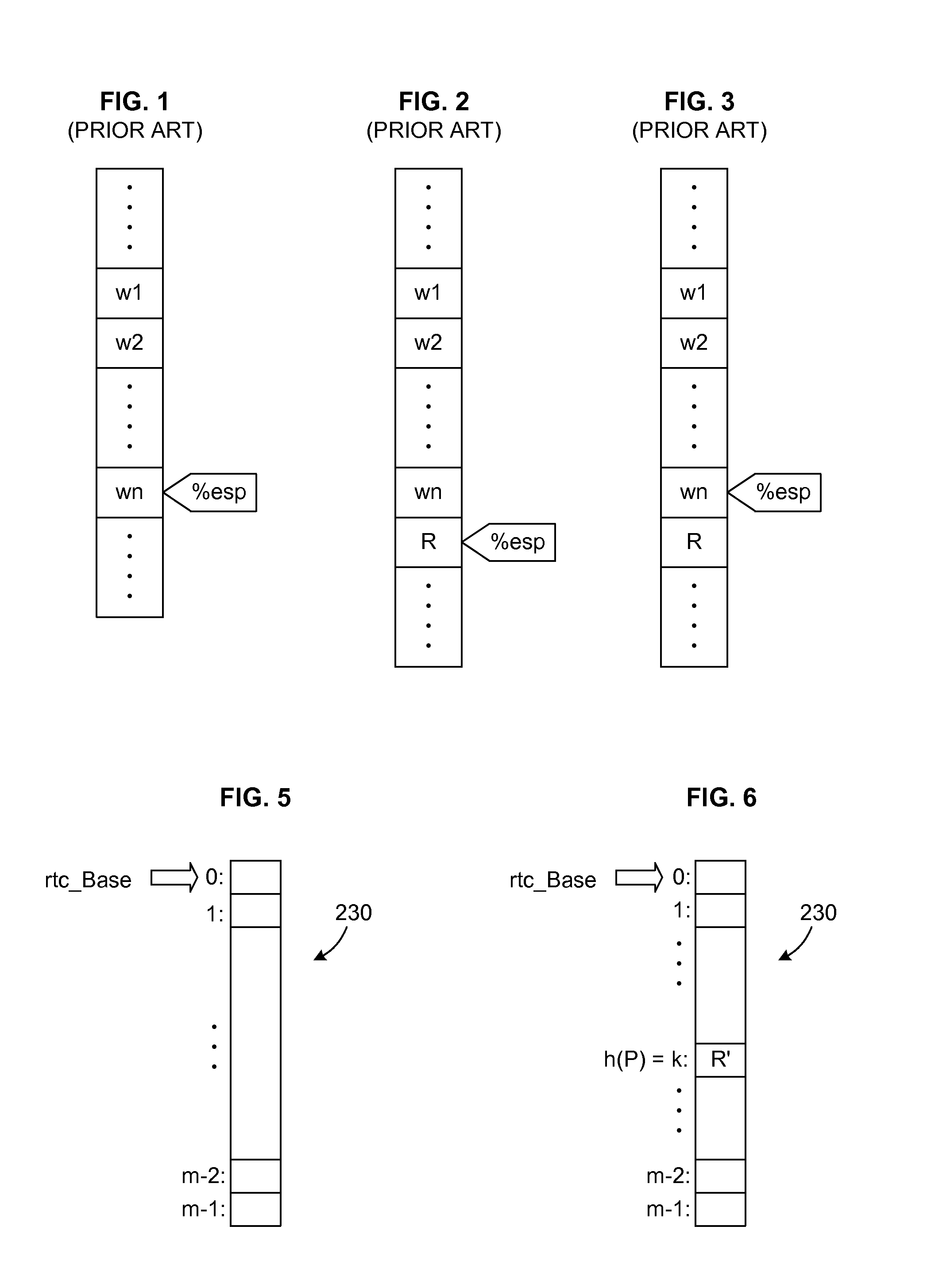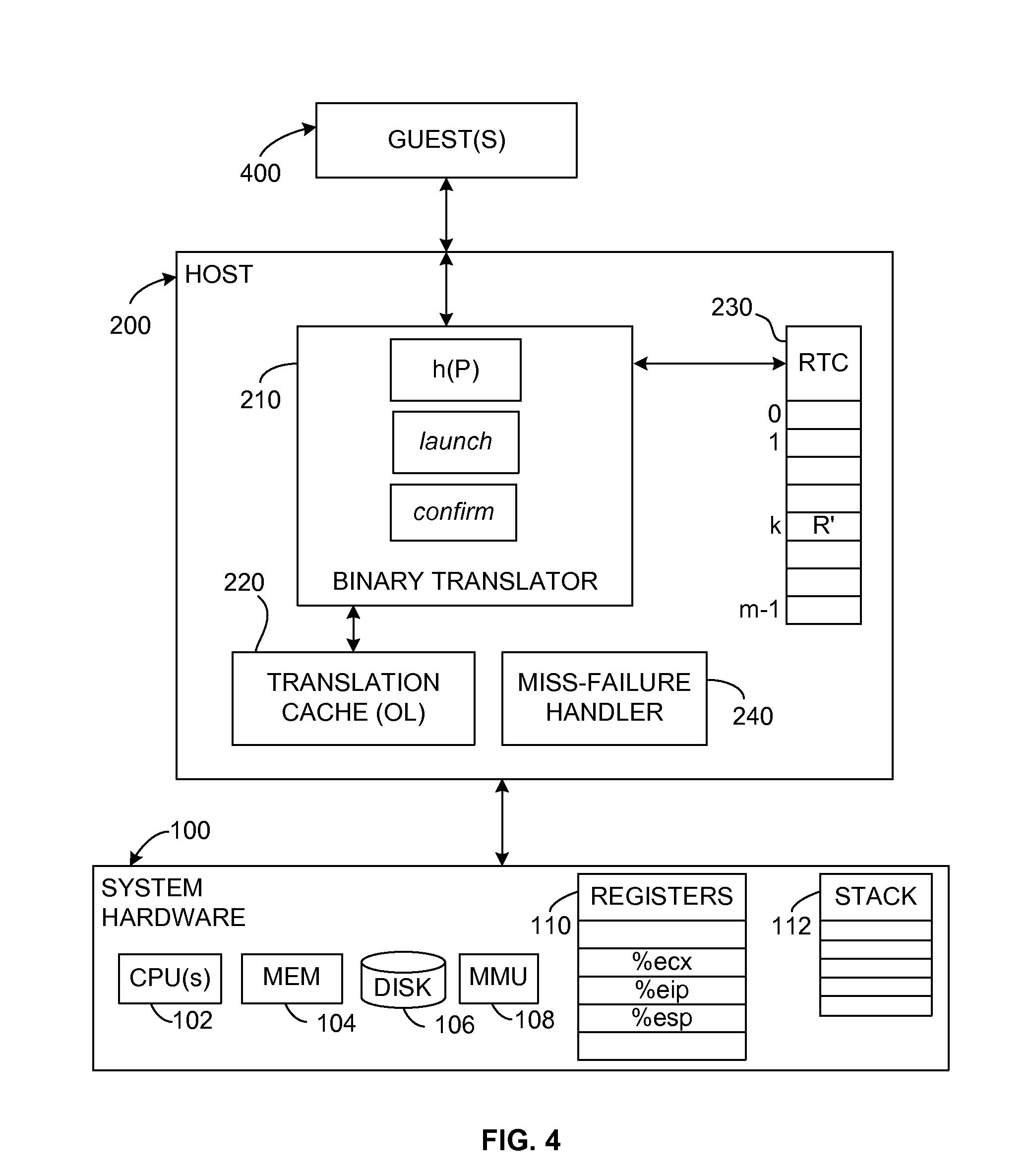Prediction Mechanism for Subroutine Returns in Binary Translation Sub-Systems of Computers
a prediction mechanism and binary translation technology, applied in the field of computer programs, can solve problems such as difficulty in initial development, complexity management, and the inability to prevent a change or addition to one part of a and achieve the effect of preventing significant effort and preventing the effect of a change or addition to one part of the system from having unforeseen and undesirable consequences in another part of the system
- Summary
- Abstract
- Description
- Claims
- Application Information
AI Technical Summary
Problems solved by technology
Method used
Image
Examples
Embodiment Construction
[0084]In the context of binary translation of an IL stream to an OL instruction stream, the software mechanisms described herein provide a way to return very quickly and accurately from a called subroutine P. This ability to return accurately works to any level of nesting. This invention applies to all kinds of binary translators, both cross-platform and non-cross-platform binary translators, including the unrestricted binary translators that make no assumptions about the behavior of the translated program. However, while the presently described embodiments may be applied in the context of any binary translator, it provides the greatest benefits for the unrestricted class of binary translators.
General System Structure
[0085]FIG. 4 shows the general structure of an exemplary system to implement subroutine calls and returns. A hardware platform 100 includes one or more processors (CPUs) 102, system memory 104, and a storage device, which will typically be a disk 106. The system memory ...
PUM
 Login to View More
Login to View More Abstract
Description
Claims
Application Information
 Login to View More
Login to View More - R&D
- Intellectual Property
- Life Sciences
- Materials
- Tech Scout
- Unparalleled Data Quality
- Higher Quality Content
- 60% Fewer Hallucinations
Browse by: Latest US Patents, China's latest patents, Technical Efficacy Thesaurus, Application Domain, Technology Topic, Popular Technical Reports.
© 2025 PatSnap. All rights reserved.Legal|Privacy policy|Modern Slavery Act Transparency Statement|Sitemap|About US| Contact US: help@patsnap.com



